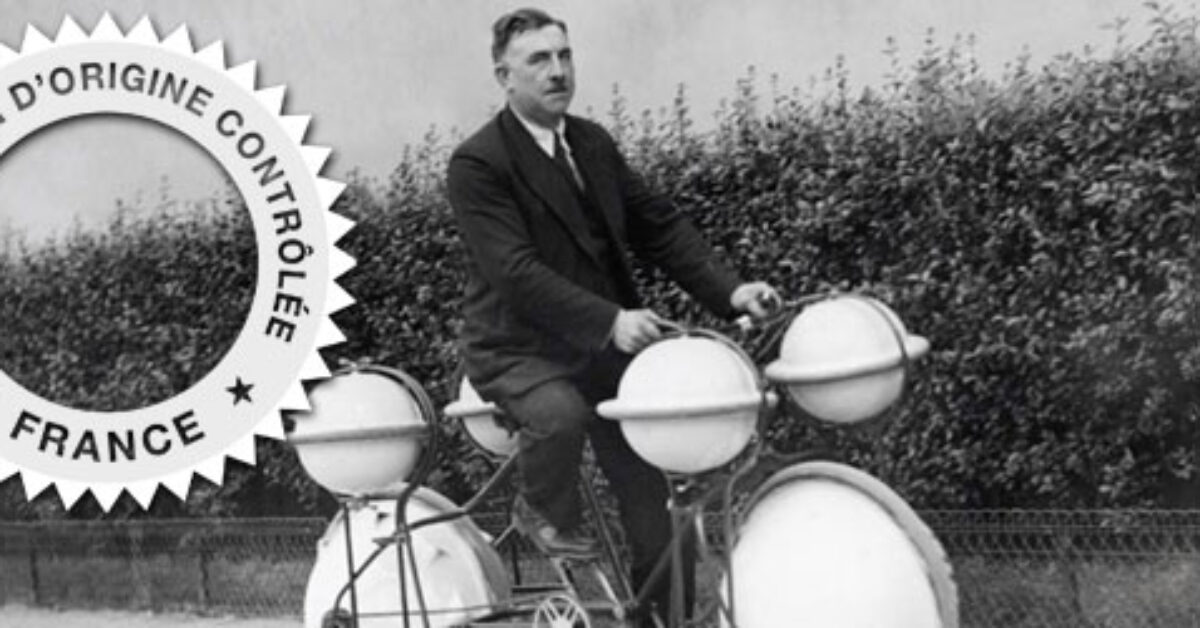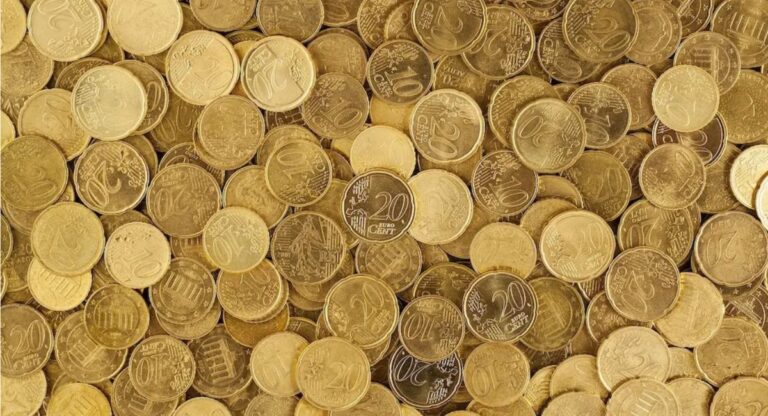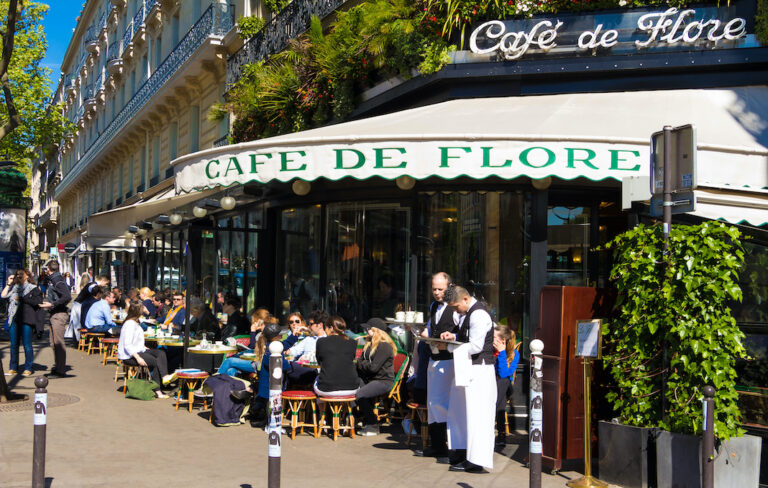Last time, we learned we had the French to thank for the hot air balloon, mayonnaise, hair dryers, stethoscopes, and the Etch-a-Sketch, but that only scratches the surface of inventions the French have come up with to make life easier and more enjoyable. Let’s shed some light on the subject:
Neon lights — Shortly after a Scotsman and an Englishman discovered the element, Georges Claude, presumably seeing a hole in the marketplace for properly advertising burlesque shows, took the excess output of his air liquefaction business—cleverly named Air Liquide—and took a couple of tubes to Paris Motor Show in 1910. Red light districts the world over would never be the same.
The Bikini — Not satisfied with the invention of the brassiere, which women tended to wear under other clothing, two like-minded Frenchmen endeavored to find an excuse for women to not only wear their bras out in public, but their panties, as well. Thus, the bikini and the atome were born in 1946, created by Jacques Heim and Louis Réard, respectively. But Heim—fool that he was—had not allowed for the display of a woman’s midriff in totality: the atome left the belly button covered, giving the bikini a decided advantage and relegating the atome to the same shelf of history where Betamax copies of Deep Impact are stored.
Not satisfied with the bikini, French scientist Jean-Denis Rouillon conducted a study to show unequivocally that women shouldn’t wear bras at all.
Parachute — If patent law in the 18th century had been what it is in the 21st, any number of daydreaming engineers—Faust Vrančić and Leonardi da Vinci among them—could have sued the pants off of Louis-Sébastien Lenormand for inventing the modern parachute. However, with no historically compelling accounts of test jumps until Lenormand’s in 1783, they might’ve fallen to their deaths proving the primacy of their inventions. To the victor go the spoils: Lenormand got the final say on the name of the device, “parachute,” from paracete (to protect against) and chute (to fall).
The Metric System — Integral to the balance of superiority between Europe and the Customary strongholds of England and the United States, the Metric system was developed thanks to France’s First Republic, when the old was thrown out in favor of the new—both aristocratically and scientifically. Based on the standard measurements set forth by the kilogramme des Archives and mètre des Archives as a way to equalize the monetary advantage to variations in measurements from country to country, the Metric system has become one of the principle reasons why the American Empire has let its weight get out of control.
Aspirin — First prepared by French chemist Charles Frederic in 1853, acetylsalicyclic acid was quickly abandoned until German chemists took another look at the compound, creating an analgesic juggernaut that would overshadow its young competitor, acetaminophen, until someone was finally clever enough to mix Tylenol with another compound isolated by French chemist Pierre Robiquet in 1832: codeine.
Hypodermic needle — Unsatisfied with oral analgesics, in the mid-1800s, a mad dash was on to start injecting people with drugs as soon as possible. Enter into the bar an Irishman, a Scotsman, and a Frenchman—the latter being Charles Pravaz—who invented methods of hypodermic injection independently of each other. Pravaz used a syringe forged entirely out of silver (a famously antimicrobial metal) to give sheep subdermal injections and earn himself, in all likely, a number of suggestive nicknames from the Lyon natives.
Denim — The only thing on this earth more comfortable than analgesics and opioids, denim originates and gets its name from the town of Nîmes (the fabric, in French, was thus de Nîmes). It was the Italians who first used the fabric to fashion pants—or Gênes, since they came from Genoa—but the invention of the fabric and its unparalleled comfort are distinctly France’s claim.
SONAR — Once the bikini had been invented, women could dive under the surface of the water, disappearing from view. To solve that particular peeping problem, French physicist Paul Langevin developed SONAR. Either that, or he worked in collaboration with a Russian electrical engineer to invent a way to detect submarines three decades before the bikini was ever invented, right in the middle of World War I. Later, wanting to give the British technology know as RaDAR (RAdio Detection And Ranging) an underwater brother, the United States renamed the processes invented by Langevin SoNAR (Sound Navigation And Ranging). The Americans were still, however, probably forced to use Customary measurements in their work.
Photography and Cinematography — Sensing, perhaps, that one day bikinis would be invented, Nicéphore Niépce got to work on printing photographic images while Louis Daguerre developed ways to capture them, probably in the hopes that these fleeting flashes at the beach might be preserved throughout the ages. Perhaps not, though. Prophetic visions of two-piece bathing suits or not, they were followed later in the 19th century by the invention of the motion picture camera and projector by Louis Le Prince, the cinematograph by the Lumière brothers, and a number of the first photographic and cinematographic tricks by Georges Méliès.
The World Cup — Now that motion pictures were well on their way, it was time for Jules Rimet, the third president of FIFA, to give the cameras something worth recording: the World Cup. Played for the first time in 1930, the Uruguayan hosts ran away with the competition, with Argentina coming in second, and the United States and Yugoslavia technically tying for third place, even though no third place game was played. It remains the best World Cup result for a U.S. team to this day.
Bonus Invention: Frenchman Baron Pierre de Coubertin is credited with founding the International Olympic Committee and creating the modern Olympics, as well as the Summer and Winter Olympic Games, the latter two being ideas that are somehow less original than the modern Olympics themselves.






